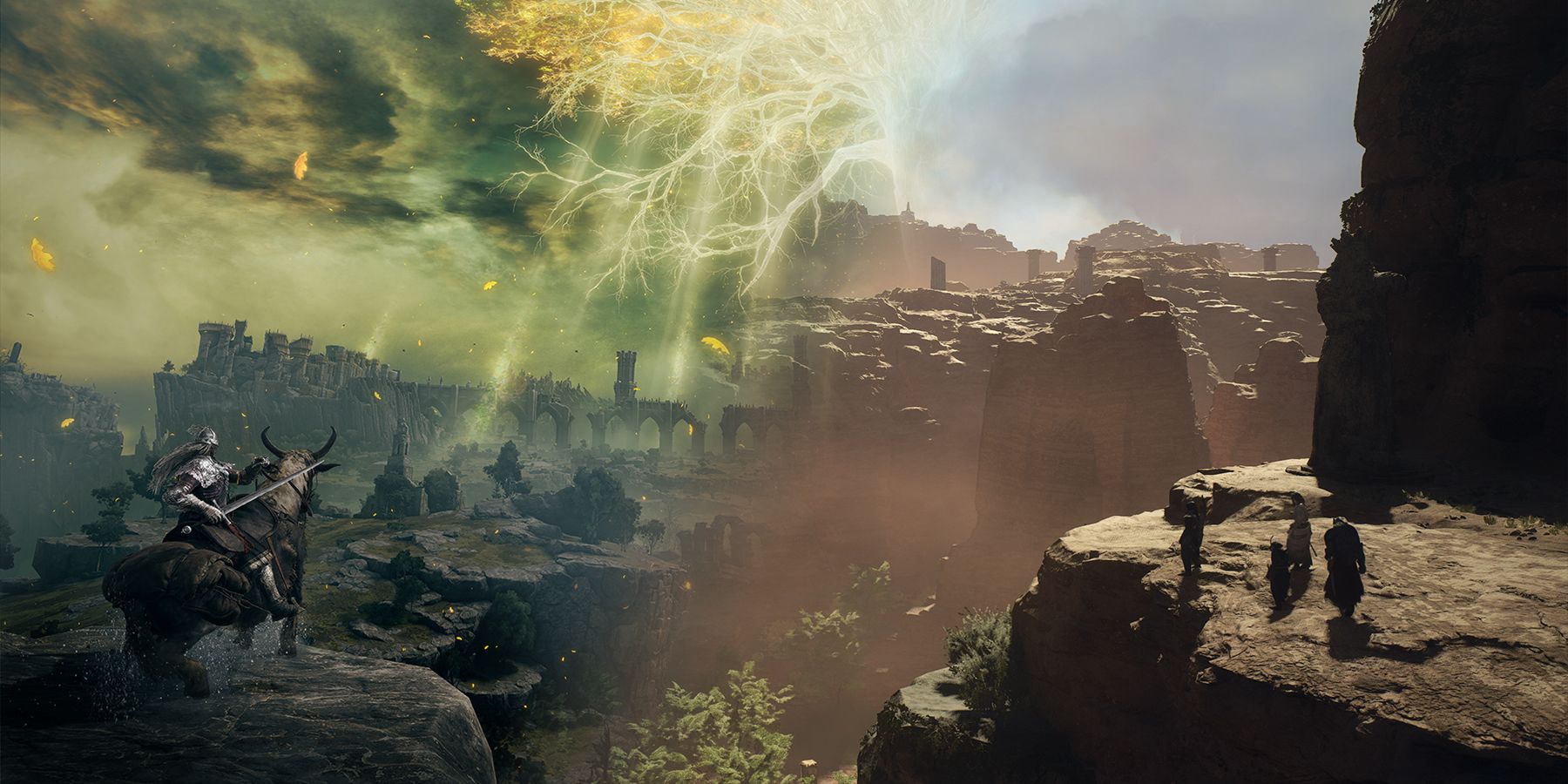Highlights
- Dragon's Dogma 2 offers an open world free of cluttered icons, encouraging true exploration and discovery for players.
- Unmarked areas in Dragon's Dogma 2 hide valuable treasures, lore, and unique encounters beyond the beaten path.
- Unlike Elden Ring, Dragon's Dogma 2 removes the compass feature, relying on Pawns to guide players and enhance immersion.
FromSoftware's Elden Ring is renowned for countless reasons, but much of its praise has often been directed toward its open-world formula. Open-world games have received credible criticism over the last decade, primarily due to the repetitive and bland model some have adopted. However, Elden Ring managed to evade that stigma by offering an open world that defies what has become the typical mold. Now, Dragon's Dogma 2, Capcom's sequel to the 2012 cult classic, seems to abide by a similar set of rules in its open world, which is four times larger than its predecessor's.
Dragon's Dogma 2's sizable open world hasn't stopped it from being a refreshing take on the tired formula. Often, the larger a game's open world is, the more likely it is to fall prey to the shortcomings that have become all too common in games of the open-world genre. Thankfully, Dragon's Dogma 2's willingness to follow the example of other open-world titles like Elden Ring allows it to circumvent what would be expected criticisms by giving players a world where personal discovery is a valuable commodity and exploration exists in its most accurate form.

Dragon's Dogma 2 Review
Dragon's Dogma 2 is everything fans could want from a Dragon's Dogma sequel, but that also means it has a few rough edges.
Dragon's Dogma 2's Open World Follows in the Footsteps of Elden Ring's
Dragon's Dogma 2 Has Limited Map Icons
Arguably, the best feature of Dragon's Dogma 2's open world is that its map isn't chock-full of icons. When an open-world map is full of icons, it tends to more forcibly pull players off course, making exploration and discovery a task rather than a privilege. Ubisoft is known for its controversial open-world model, which infamously showcases an array of icons, each indicating a different activity to complete or a chest to find, even if the rewards are insignificant. On the other hand, while Elden Ring's map eventually becomes somewhat filled with icons, they really only indicate locations and fast travel points.
Dragon's Dogma 2 adopts a similar approach and only displays locations, Campsites, and Riftstones with which to get Pawns, although vendor icons can also be seen when the map is zoomed in. Other icons, like chests and resource nodes, only appear on the mini-map when players' Pawns acknowledge their location. Aside from that, side quests and any other optional activities cease to leave a mark on the map, leaving players without any obligation to do anything apart from whatever they want to do and providing them with the truest sense of exploration possible.
Dragon's Dogma 2's Open World Is Filled With Unmarked Areas to Discover
Even without a map full of icons, there are plenty of reasons to venture off course in Dragon's Dogma 2. In the wilds beyond the beaten path, players can often find underground caves filled with enemies and special items, world-building lore entries, and giant monsters they might not encounter otherwise. Occasionally, Pawns will even direct the player's attention to unique statues that can lead them to valuable treasures like Seeker's Tokens.
Where Dragon's Dogma 2's Open World One-Ups Elden Ring's
Despite Dragon's Dogma 2's open world taking after Elden Ring's, it actually has a leg up on it in one significant way. Elden Ring still provides players with a compass, whereas Dragon's Dogma 2 does not. Instead, Dragon's Dogma 2's Pawns act as a compass of sorts, guiding players to nearby points of interest or providing hints about their surroundings. This boosts immersion and leaves it even more up to players whether they want to discover what lies beyond their immediate vicinity.
Dragon's Dogma 2 and Elden Ring are prime examples of what an open-world game should be, although Dragon's Dogma 2 only comes in on the standard and success previously established by Elden Ring. With very few map icons, plenty of things to discover, and worlds that promote exploration in the truest sense, Dragon's Dogma 2 and Elden Ring are reminders that open worlds can be done well and that the genre isn't as lost as some may claim it to be.




